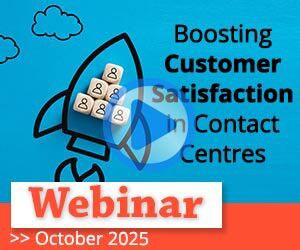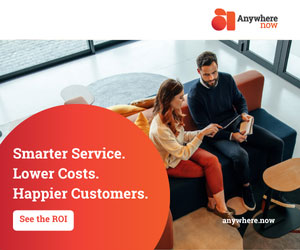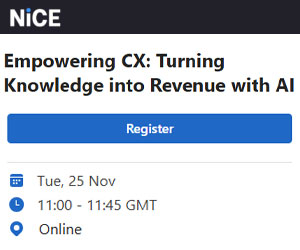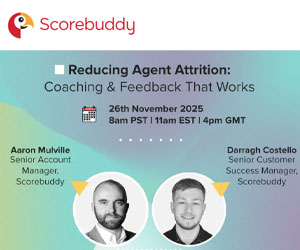There are huge benefits to be gained from benchmarking a contact centre. By comparing their business processes and performance against others – particularly those deemed to be industry leaders – contact centre operators can establish their strengths and weaknesses and use that information to make vital process improvements.
The more regularly these contact centres compare themselves with their best-in-breed peers, the greater the insight they’ll have into specific issues they face – for instance, high agent absenteeism – and the ways in which other organisations are tackling such problems.
Benchmarking, in essence, helps take the guesswork out of contact centre management. It can stop executives having to rely on ‘gut feelings’ as to whether their average speed to answer (ASA) or net promoter scores (NPS) are in the top quartile for their vertical sector. It can also establish a healthy sense of competition: a desire to be ‘just as good as, if not better than’ the contact centre down the road.
Benchmarking categories
According to Paul Gardner, associate director at Xantus Consulting, a contact centre that wants to start benchmarking itself against others for the first time needs to work out which areas it needs to focus on. The key, he says, is not to attempt to take a broad-brush approach and benchmark everything at once, but rather to concentrate on one of the following categories or a subset thereof:
- Key performance indicators (KPIs): Does the contact centre have the same KPIs as others? Is it measuring the right things?
- Organisational management: Does the contact centre have the same combination of roles – both agent and management – as comparable peers, and a similar balance of shift patterns?
- People: How does the contact centre compare with others in areas such as attrition, sickness rates and agent satisfaction?
- Processes: Are other contact centres’ processes more efficient? If so, how?
- Technology: How does the contact centre’s technology portfolio compare to those of its peers?
- Management information: How do the contact centre’s KPI scores – for example, average speed to answer (ASA) and average handling time (AHT) – measure up against those of its peers?
- Location and facilities: What are the key differences?
- Customer experience: Do customers generally have a better or worse experience using this contact centre than they do using other contact centres?
Approaches to benchmarking
Having established what element of the organisation they want to compare against others, the next step contact centre managers should take is to determine which method of benchmarking will work best for them.
“Some methods are more expensive than others,” warns Shona Harper, founder and director at training provider and consultancy Contact Centre Professional (CCP). “Employing a consultant to conduct in-depth quantitative benchmarking exercises on your behalf can be fairly costly. More qualitative approaches, such as benchmarking based on networking discussions with managers at other centres, are a lot cheaper but will only provide a limited amount of data.
“Personally, I would advocate combining several methods,” she continues. “By doing this, you can use different viewpoints to build a more comprehensive picture of where you stand in a particular area, and how well you compare with others.”
So, what approaches exist for contact centre benchmarking, and what are the pros and cons of each? According to the experts interviewed by Call Centre Helper for this feature, the top eight techniques are as follows:
1. Participating in industry events, such as forums and online best practice webinars
Advantages
Whether they’re held online or face-to-face, industry forums and briefings can be an inexpensive but useful source of information about a specific topic, such as attrition or absenteeism – especially when the organiser has done some independent research on the subject in question. A good example is the Professional Planning Forum’s annual conference, at which the industry body typically presents data it has collected throughout the year. Events such as these also provide informal peer-to-peer networking opportunities, and the chance to share data that can later be used as guideline benchmarks.
Disadvantages
Although it can be tempting to sign up for every forum going, not all will provide valuable data. “It’s important to be selective, and to use the time you have to network actively,” says Paul Weald, strategy director (customer innovations) at systems integrator and consultancy ProtoCall One. Remember, too, that collecting data through informal peer-to-peer discussions will only provide a limited view on a particular topic. This will often need to be corroborated by further research.
2. Getting involved in site visits
Advantages
Site visits can be particularly useful for those wanting to benchmark their own centre’s facilities and/or technology portfolio, as these are physical elements and therefore tend to be more visible than, say, management information or processes. In addition, visits are typically organised by industry bodies, technology vendors or consultancies that have sought the agreement of the contact centre in question, on the understanding that they will need to share some key data and best practice. They can therefore be a valuable source of insight into the day-to-day operations of another organisation.
Disadvantages
It is rare for contact centres hosting site visits to give competitors access to their premises. For this reason, contact centres shouldn’t rely on site visits to benchmark themselves against organisations in the same vertical sector. “The other problem is that site visits are often very subjective,” says Xantus Consulting’s Paul Gardner. “If you want to use them as a benchmark, it’s sensible to conduct visits to other sites as well to get a more balanced overview.”
3. Purchasing industry data reports
Advantages
Industry reports such as Contactbabel’s “The UK Contact Centre Decision-Makers’ Guide” and Contact Centre Research’s “Call Centre Pay and Rewards Book” are based on quantitative data, typically collected by a research firm over the course of six to twelve months. They therefore provide a more robust evidence base for benchmarking than qualitative approaches such as networking. It is also considerably cheaper to buy these reports than to commission bespoke studies.
Disadvantages
The biggest issue with industry reports is that they are created using historical rather than real-time data, so can quickly become obsolete. In addition, says CCP’s Shona Harper, some reports may be too “broad-brush” to offer any real insight. “They don’t necessarily take into account geographical location or vertical market, which can be limiting,” she says.
4. Conducting mystery shopping exercises
Advantages
Whether it is carried out in-house or by a consultant, mystery shopping can offer insight into specific elements of the customer interaction. A manager might, for example, create a simple set of scenarios and then mystery shop their own contact centre to amass qualitative data on agent empathy or quantitative data on first-call resolution (FCR). If the exercise is then repeated mystery shopping a competitor, using the same parameters, it is possible to develop a guideline benchmark.
Disadvantages
Collecting enough data in-house to create a statistically valid benchmark consumes both time and resources; it may not be practical for all contact centres to adopt this model. The alternative is to outsource the exercise to a third party. “If you do this, ensure they collect the data you need them to collect,” says ProtoCall One’s Paul Weald. “It is very easy for a mystery shopping firm to present a raft of statistics relating to quantitative data such as ASA. However, this may not be particularly useful if you actually want to benchmark something like customer experience.”
5. Keeping a log of data in the public domain
Advantages
“Local media can be a really useful source of information about contact centres in the immediate areas,” says Mike Allen, practice leader at Right First Time Contact Centre – a programme that independently measures FCR and customer satisfaction across the sector. “You can gauge how much local competitors are paying their staff through recruitment advertisements, for example.”
Disadvantages
The volume of data available in the public domain will always be very limited. While managers might be able to find salary information and possibly details about a local competitor’s corporate social responsibility (CSR) programme – for example, how much fundraising it does in the community – they are highly unlikely to find any evidence of contact centres’ operational targets or scores.
6. Commissioning research
Advantages
Getting a research provider to benchmark a contact centre’s specific KPIs against those in other organisations is one of the most robust ways of measuring an organisation’s strengths and weaknesses. It provides tangible, quantitative results based on rigorous analysis, which will often be complemented with trouble-shooting advice from the research provider.
Disadvantages
It may be the most robust approach, but it is also one of the more expensive ways to benchmark a contact centre. As a result, it is important for managers to understand exactly what they want to measure and to find a supplier that can work with them to meet these objectives. “If you specifically want to benchmark employee engagement, for example, you need to find a specialist consultancy like Bright that can focus on that,” says Right First Time Contact Centre’s Mike Allen.
7. Conducting customer surveys
Advantages
Carrying out customer surveys is widely regarded as a powerful way of gauging the customer experience and, as Xantus Consulting’s Paul Gardner points out, there is a lot of research to suggest that only 60% of customers would rate a contact centre experience as excellent. “This 60% grade can very easily be used as a simple benchmark for contact centres to rank themselves against others,” he says. “They don’t actually need to go out and collect data from competitors’ contact centres.”
Disadvantages
Conducting customer surveys – be it through post-call automation, post-interaction call-backs or other methods such as email – can be expensive and time-consuming. Sufficient resources need to be allocated to its collation and analysis.
8. Enter award programmes
Advantages
Submitting an entry to a regional, national or international recognition programme such as the European Call Centre Awards or The Sunday Times ‘Best Companies to Work For’ annual listing can provide an indication of how a contact centre ranks against its peers – whether it subsequently features in the roll-call of winners or not.
Disadvantages
Although awards and recognition programmes are relatively cheap to enter, it can take a long time to collate the information required to put a submission together. If a contact centre has insufficient time and drafts a submission that doesn’t actually reflect its true capability to the judges, then the results can be skewed. “The other problem with benchmarking this way is that it depends on who enters and the quality of their submissions,” adds CPP’s Shona Harper. “Contact centres shouldn’t therefore assume they are best-in-class or compare themselves only with the winner in a given category. They should use this data as a steer, but then look to other data sources to provide more evidence.”
Conclusion
There are many ways that contact centres can benchmark themselves, not all with a hefty price-tag attached. As outlined above, some of the quickest and easiest ways managers can gauge standards in other contact centres is simply to talk with their peers. This may not provide rigorous quantitative data, but it can certainly be effective as a starting point.
However managers go about benchmarking – whatever their starting point is – the crucial thing for them to bear in mind is that they need to act upon the findings.
“Remember: benchmarking data is only useful if you do something with it,” says ProtoCall One’s Paul Weald. “If you don’t plan to make a difference, knowing that you’re better or worse than other people is a moot point.”
By Alex Coxon
Author: Jo Robinson
Published On: 21st Jul 2010 - Last modified: 15th Aug 2025
Read more about - Customer Service Strategy, Absenteeism, Bright, Metrics, Monitoring, Service Level, Service Strategy







































Very good comments. Just one more; you could also take part in the biggest (100 centres reviewed and compared annually) bespoke contact centre benchmarking survey; the Bright Index 😉
Best
Mats